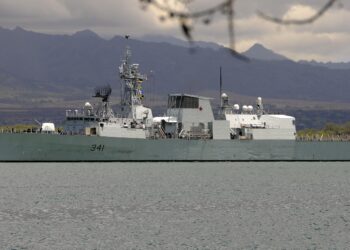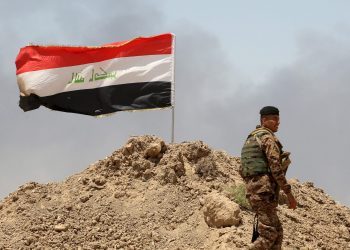,
MOSCOW: Russia's president and defense minister said Thursday that developing the strategic forces is the main priority for the country's defense agenda.
President Vladimir Putin told a meeting with top military officials, “Maintaining a strategic balance will mean that our strategic deterrent forces should be able to guarantee the neutralization of any potential aggressor, no matter what modern weapons systems he possesses.”
He called for the creation of cutting-edge strategic weapons, and emphasized the importance of quality.
“We must meet schedules to create new strategic weapons to secure a balance of forces in the world. This means that we will not indulge in comparisons of quantitative data of our strategic nuclear deterrent forces as we did previously,” the president said.
Defense Minister Sergei Ivanov told the meeting that Russia's Armed Forces will buy 17 intercontinental ballistic missiles in 2007, as well as four spacecraft and four carrier rockets.
* Russia's modernization plans for its strategic forces
According to a new doctrine for the development of the armed forces, Russia will completely modernize the naval component of its nuclear triad by 2016, deploying new Bulava ballistic missiles on Project 955 Borey-class nuclear-powered submarines and equipping land-based strategic missile units with silo-based and mobile Topol-M (SS-27) ballistic missiles.
Russia's Missile Forces regularly launch missiles to test their performance characteristics and decide whether they can remain in service. About 360 silo-based RS-18 (SS-19 Stiletto) missiles, which have been in service for 29 years, are currently in operation in the forces.
The R-30 Bulava (SS-NX-30) ballistic missile was developed at the Moscow Institute of Thermal Technology. It can carry up to ten nuclear warheads, and has a range of 8,000 kilometers (about 5,000 miles).
Bulava missiles, a sea-based version of the Topol-M, could be deployed on Borey-class nuclear submarines as early as in 2008, according to missile designers.
Last year, Russia conducted two successful test launches of the Bulava. The first in-flight test launch was conducted on September 27, 2005, from the Dmitry Donskoi, a Typhoon-class ballistic missile submarine. But this year two of test launches had failed.
The defense minister earlier said Russia is planning to purchase 69 silo-based and mobile Topol-M ballistic missile systems in the next decade.
Russia currently has five missile regiments equipped with silo-based Topol-M missiles, and the first regiment equipped with mobile Topol-M systems is set to be put on combat duty in 2006.
* Modernizing the Navy and Air Force
Russia's Navy Commander earlier said that replacing outdated strategic submarines should be made a military shipbuilding priority for the next five years.
President Putin said in his state of the nation address on May 10 that Russia would commission two new strategic nuclear submarines in 2006.
Russia is also planning to modernize the air component of the nuclear triad by modernizing its fleet of strategic bombers.
Ivanov said on July 5 that Russia's Air Force had commissioned a modernized Tu-160 Blackjack strategic bomber and could receive a new Tu-160 bomber by the end of the year.
* Russia's nuclear capability
As of January 1, Russia possessed 927 nuclear delivery vehicles and 4,279 nuclear warheads for strategic offensive weapons, while the United States owns 1,255 and 5,966, respectively, according to the Russian Defense Ministry's department for contract compliance control.









